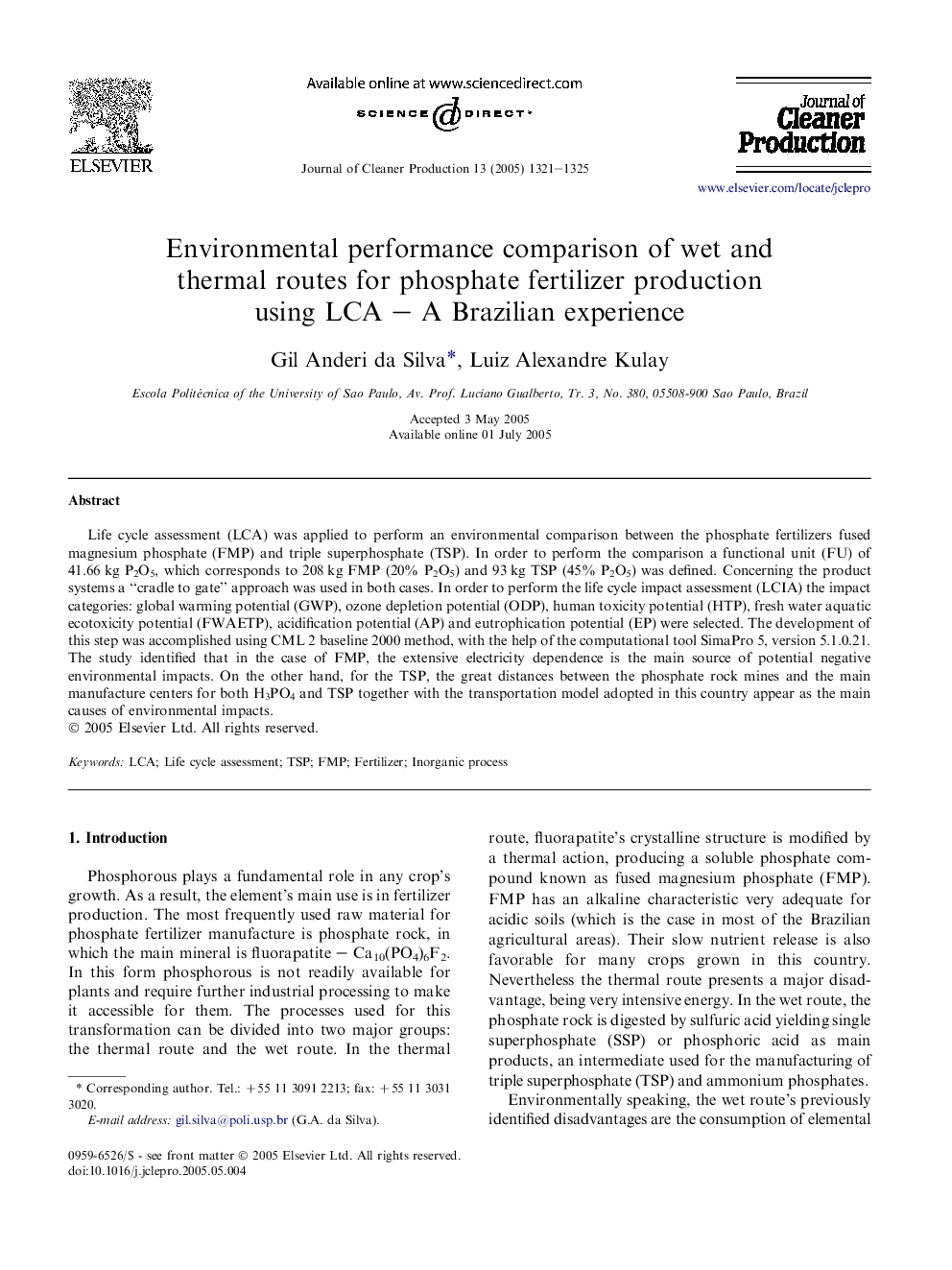| Article ID | Journal | Published Year | Pages | File Type |
|---|---|---|---|---|
| 9825881 | Journal of Cleaner Production | 2005 | 5 Pages |
Abstract
Life cycle assessment (LCA) was applied to perform an environmental comparison between the phosphate fertilizers fused magnesium phosphate (FMP) and triple superphosphate (TSP). In order to perform the comparison a functional unit (FU) of 41.66Â kg P2O5, which corresponds to 208Â kg FMP (20% P2O5) and 93Â kg TSP (45% P2O5) was defined. Concerning the product systems a “cradle to gate” approach was used in both cases. In order to perform the life cycle impact assessment (LCIA) the impact categories: global warming potential (GWP), ozone depletion potential (ODP), human toxicity potential (HTP), fresh water aquatic ecotoxicity potential (FWAETP), acidification potential (AP) and eutrophication potential (EP) were selected. The development of this step was accomplished using CML 2 baseline 2000 method, with the help of the computational tool SimaPro 5, version 5.1.0.21. The study identified that in the case of FMP, the extensive electricity dependence is the main source of potential negative environmental impacts. On the other hand, for the TSP, the great distances between the phosphate rock mines and the main manufacture centers for both H3PO4 and TSP together with the transportation model adopted in this country appear as the main causes of environmental impacts.
Related Topics
Physical Sciences and Engineering
Energy
Renewable Energy, Sustainability and the Environment
Authors
Gil Anderi da Silva, Luiz Alexandre Kulay,
